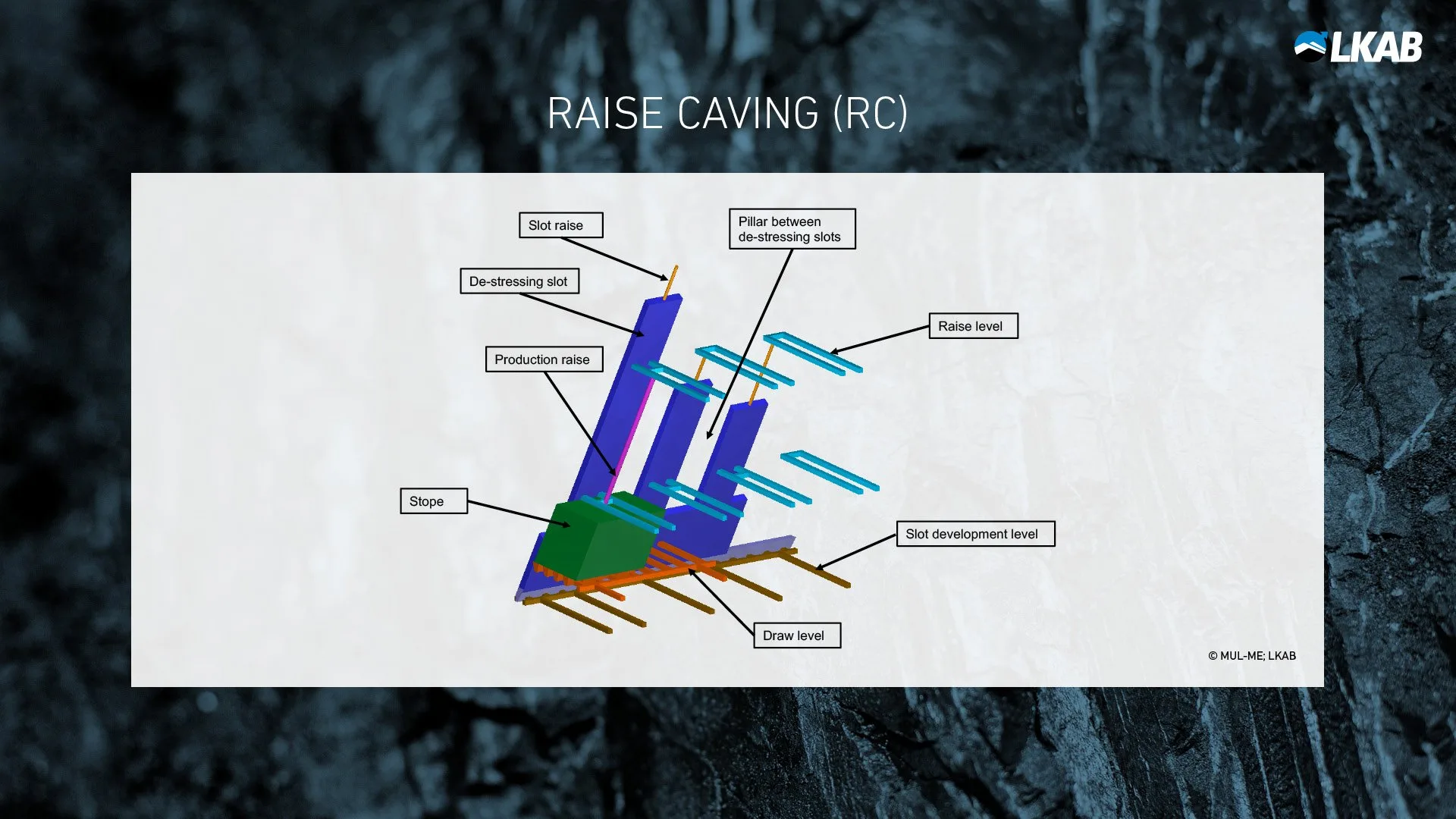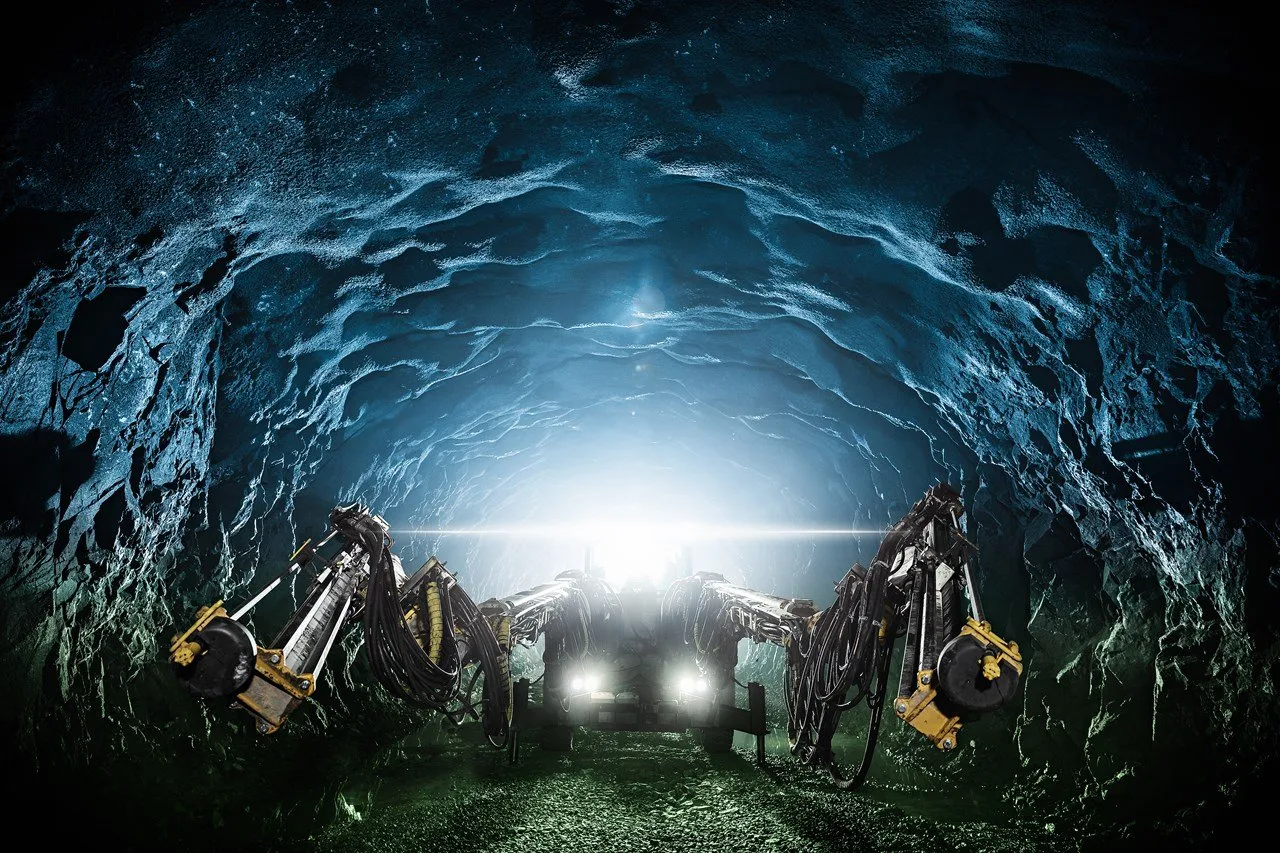A new mining method being tested in the Kiruna mine

As mining depths increases, so do the challenges. Because of this, the completely new mining method raise caving will be tested in full scale. A groundbreaking step forward, towards an even safer and more efficient mine. ”Raise caving is developed for efficient mining at great depths”, says Matthias Wimmer, head of mining technology at LKAB in Kiruna.
The path between thought and action usually has a root in something, in an idea. Something small is needed, a beginning in the form of a seed, for tha idea to grow and flourish into something bigger. And that’s exactly the story of how raise caving came to be. The method saw the light of day for the first time on a napkin: ”There are mines whose production takes place at very great depths, down to 4,000 meters. However, mines that apply some form of large-scale caving have not yet reached those depths. And it is highly uncertain whether they will be able to maintain production volumes in the long run. Based on that insight, about where we are, the idea was born”, says Matthias Wimmer.
Raise caving, unlike sub-level caving, is a method that makes it possible to mine the ore from the bottom up instead of from the top down. The mining sequence is thus reversed and that change in technology means several gains, not least in terms of safety.”The rock stresses can never be eliminated in a mine, but with this method we have the opportunity to influence where seismic events take place, far away from the active infrastructure”, says Matthias Wimmer.
In addition, this upside-down method, in combination with good draw control, provides good conditions for mining more ore and significantly less waste rock, since dilution is avoided.”Since infrastructure and drifting can be reduced with this method, we have prerequisites for increasing efficiency by as much as 50 percent”.Mining starts with the shafts, which are made by a form of sub-level caving. But no people should work with drilling and blasting, in a traditional sense, inside the shaft. ”In parallel with the method development of raise caving, we work with machine development. It will be a highly automated machine that has the ability to both drill and load from the shaft. We are also developing a module for, among other things, rock reinforcement and hydraulic fracturing”, says Matthias Wimmer.
The rock is relieved from the rock stresses by a system of stress-relieving slits. The pillars between the screens must withstand a large pressure to enable the construction of more screens. The breaking takes place in a protected area. As early as 2025, a decision needs to be made on how the underground mines will be mined below current levels, at a depth of 1365 meters and a depth of 1250 meters. Therefore, not only raise caving tests are underway, but other possible ways forward – through the mountain – are being investigated.”This is a project that will run for several years to come and which has the potential to create great value, not only for LKAB but also for the mining industry internationally. This is also a big step forward for digitisation and automation in the industry, Madelene Johansson, project manager for the raise caving project. Towards the depth, it becomes even more important to ensure a trouble-free production of large volumes, through more efficient methods and processes. For example, less drifting and fewer mobile machines.





